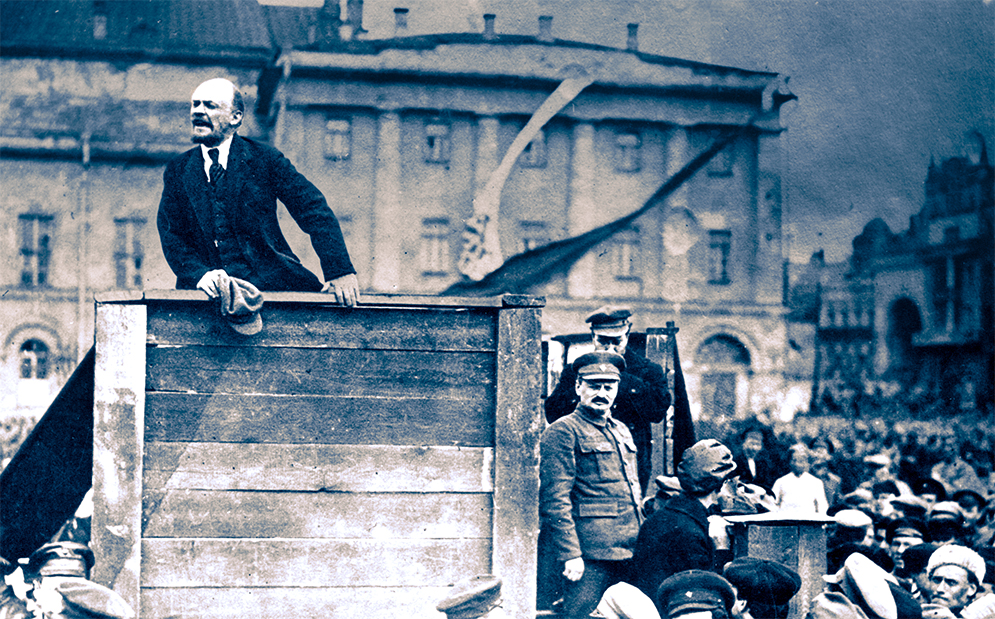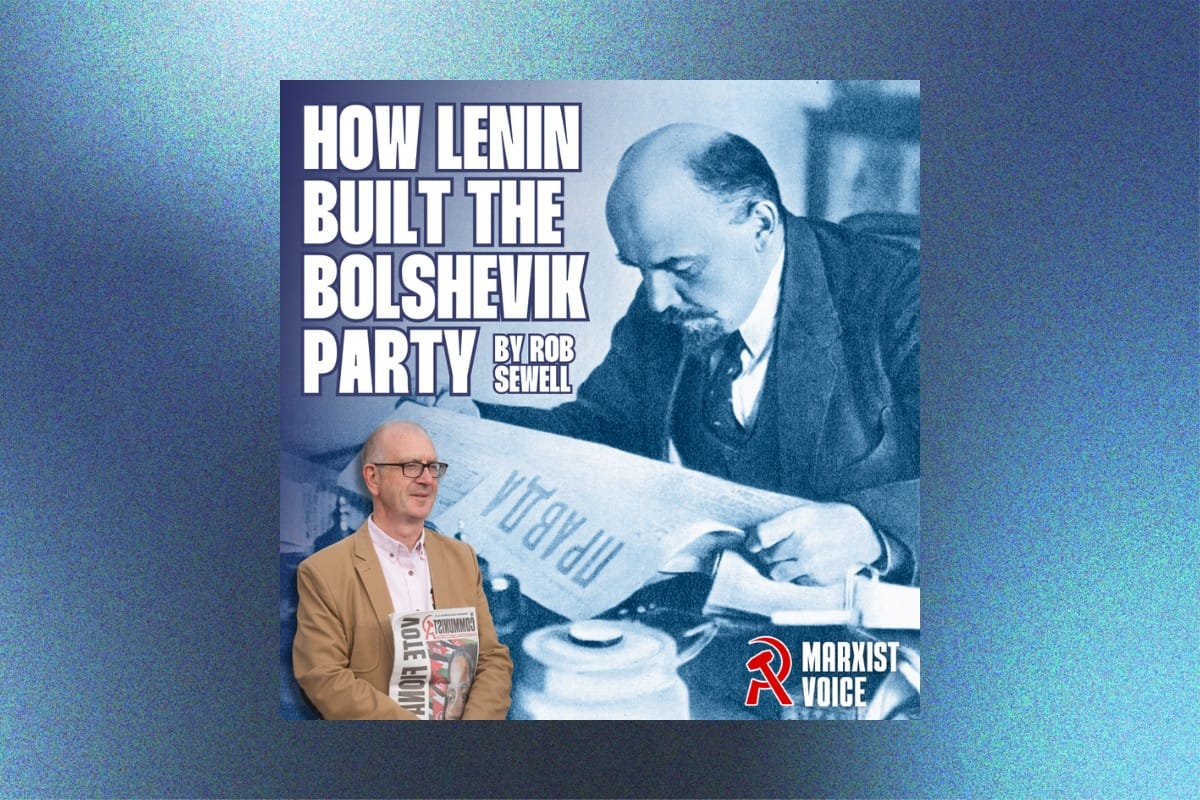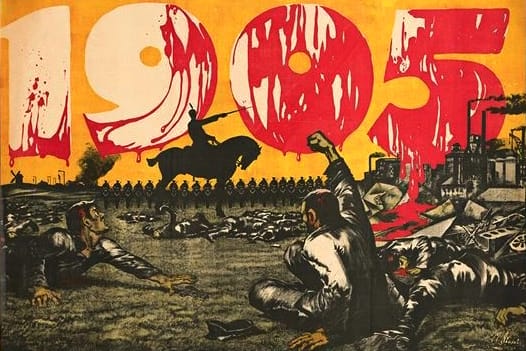A revolution is not a linear process. At some point that which is unresolved must be resolved. As the Russian spring turned to summer in 1917, the demands of the Bolsheviks were clear: All power to the soviets! Down with the ten capitalist ministers! In other words, for the workers to break with the capitalist “compromisers” (who sought to undermine the revolution at every stage) and take power.
The advanced workers in Petrograd had moved towards this conclusion, but the rest of the country stilled lagged behind. Even the Petrograd workers still had faith that the reformists would come to understand this and, to quote Leon Trotsky, “still cherished the illusion that everything could be obtained by words and demonstrations.”
In that sense the Petrograd movement of July 3-4 (July 16-17 in the new calendar) was clearly premature and the Bolsheviks knew it, yet they had to stand with their class. The resulting failure of the movement provided the forces of reaction with the excuse to hit back…and their target was the one organisation they feared the most: the Bolsheviks.
It seemed as if the revolution was now very much in the balance, ready to be crushed.
In this article by Alan Woods, taken from his book Bolshevism: The Road to Revolution, we look at how the events of July unfolded and what lessons were learnt by Lenin and the Bolsheviks.
Writing soon after these events, Leon Trotsky explained: “We are at present passing through days of trial. The steadfastness of the masses, their self-control, the fidelity of their ‘friends’, all these things are being put to the acid-test…We must have a radical change of the whole system. We need revolutionary power.”
For further reading and information about the 1917 Russian Revolution, visit our dedicated website In Defence of October.
The cowardice of the Mensheviks and SRs in refusing to take power meant that the initiative inevitably passed to the forces of reaction. Despite the February overturn, the tsarist regime had not been decisively defeated. Behind the shirttails of the Russian popular front (the Provisional Government), the ruling class was regrouping and preparing its revenge. The result was the reaction of the “July Days”.
The immediate issue was the military offensive of July 1 [old calendar]. On the very day that the workers and soldiers were demonstrating on the streets of Petrograd demanding peace and the publication of the secret treaties, Kerensky launched a new offensive [in the ongoing war against Germany.] “Spontaneous” patriotic demonstrations were organised on the Nevsky Prospekt, where smartly dressed bourgeois ladies and gentlemen vied with officers and journalists in their invective against the Bolsheviks. The reactionaries were once again crawling out of the woodwork, encouraged by news of the offensive.
At the Congress of Soviets, the Bolshevik minority energetically protested against the offensive, pointing out that it would lead to a strengthening of the reactionary elements in the armed forces, who would take advantage of the situation to attempt to re-establish discipline and regain control. The revolution would be placed in the gravest danger.
If the offensive succeeded, it would encourage the reactionary forces and push a layer of the petty bourgeois and peasants towards the bourgeoisie, isolating the revolutionary proletariat. If it failed, it could lead to the complete collapse of the army, producing a demoralising effect on the masses. In the event, the latter variant was what occurred.
On July 2, a ministerial crisis broke out over the Ukrainian question, which revealed the utter inability of the Provisional Government to solve the national question. The case for breaking the coalition and ejecting the bourgeois ministers was never clearer. But the more the crisis deepened, the more the “socialist” ministers clung to the bourgeois liberals. Kerensky was moving rapidly to the right and becoming indistinguishable from the Cadet ministers. The reformist leaders were terrified of the masses. The June demonstration had given them a fright – the more they saw the increase in the influence of the Bolsheviks, the more they saw the danger to their position from the left, and clung still more fervently to the right. The Bolsheviks, for their part, intensified their campaign demanding that the Mensheviks and SRs break with the capitalists and take the power into their own hands. This apparent paradox in reality represented the only way in which the Bolsheviks could gain the ear of the masses. Lenin even put to the Soviet leaders that, if they took the power, the Bolsheviks would guarantee that the struggle for power would be confined to the peaceful struggle to win a majority in the Soviets.
Explosive events
But the Bolsheviks could not prevent the explosion that was being prepared. On July 3, the Petrograd soldiers, sailors and workers, incensed at the moves of the government to send them as cannon fodder to the front, poured out onto the streets of the capital. It was a spontaneous uprising involving a large number of people moving around the streets with no clear aim or strategy. The reformist leaders looked on aghast as an immense crowd of workers and sailors surrounded the Tauride Palace where the Central Executive was meeting. The initiative for the demonstration came from below, from the workers and soldiers of Petrograd, exasperated by the shilly-shallying of the Soviet leaders, whose indignation had been raised to boiling point by the announcement of the July offensive. Far from aiming to seize power, the Bolsheviks did their best to restrain the masses, fearing quite rightly that Petrograd would be isolated from the rest of Russia.
Anarchist and Black Hundred elements attempted to incite the demonstrators to attack the building and arresting the Soviet leaders, and an actual attempt was made to arrest the SR leader Chernov. This enabled the reactionary press later to describe the July demonstration as a pogrom and simultaneously as an attempted putsch organised by the Bolsheviks against the revolution and the Soviet majority. None of this bears the slightest relation to the truth. The Bolshevik Central Committee met at 4pm on July 3 and decided to do everything possible to restrain the movement, which threatened to turn into a full-blown uprising. Delegates were hastily dispatched to the factories and barracks to prevent the masses from coming out onto the streets but it was already too late. The movement had started and nothing could stop it.
Late that night the Central Committee, together with the Petrograd Committee and the Military Organisation, taking into account the mood of the masses, decided to take part in the demonstration in order to give it an organised and peaceful character.
But the arrival of troops from the front [brought in by Kerensky] was the signal for a counter-revolutionary offensive. The bourgeois took revenge for the fright it had suffered. The Bolsheviks were declared a “counter-revolutionary party.” Cossacks and police fired on the demonstrators from the rooftops, causing panic. Workers were beaten up by respectable ladies and gentlemen on the Nevsky Prospekt. There was a wave of raids, arrests, beatings, and even murders. On the night of July 4–5, the Justice Minister P.N. Pereverzev gave the press papers that purported to show that Lenin was a German agent. On the night of July 5, the offices of Pravda were wrecked by government forces. The Bolshevik papers were suppressed. Rebel units were sent to the front to be massacred. Suddenly, the pendulum was swinging violently to the right.
The demonstrations of July 2 and 3 revealed many things. It showed that the reformist leaders had decisively lost their base in Petrograd. But it also showed, as the Bolsheviks had warned, that Petrograd was not Russia, that the Mensheviks and SRs still had huge reserves of support in the workers and peasants of the provinces. Even in Petrograd, the mood in the barracks was not uniform. Although a majority of the soldiers and still more the sailors were with the Bolsheviks at this time, some units remained passive or were undecided. However, not a single unit of the Petrograd garrison was prepared to fight to defend the Provisional Government or even the Soviet leaders.
The workers and soldiers did not get off scot-free. Mistakes are always paid for. Some hundreds were killed. But if the Bolsheviks had not placed themselves at the head of the demonstration in order to give it an organised and peaceful character, there would undoubtedly have been a bloodbath. Moreover, the party’s influence over the most advanced workers would have been destroyed. At times it is necessary to go with the workers even when they are mistaken, in order that they should learn by experience and draw the conclusions. The experience of the July Days was a painful one, but the workers learned to trust the judgment of the Bolsheviks who had warned them in advance of what would happen, but then participated shoulder to shoulder with them.
On July 2, as a result of the split on the Ukrainian question, three Cadet ministers had resigned from the government, followed later by Pereverzev and, on the 7th, by the Prime Minister, Prince Lvov. The remaining cabinet ministers appointed Kerensky and entrusted him with forming a new government—the Second Coalition. The attack on the left greatly strengthened the counterrevolutionaries who now felt that they had the initiative. After the suppression of the movement in Petrograd, the bourgeois felt that the time had come to “restore order.” The Cadets demanded that the Socialist ministers break their links with the Soviets. The left wing, in the person of the Bolsheviks, was to be crushed.
Bolsheviks driven underground
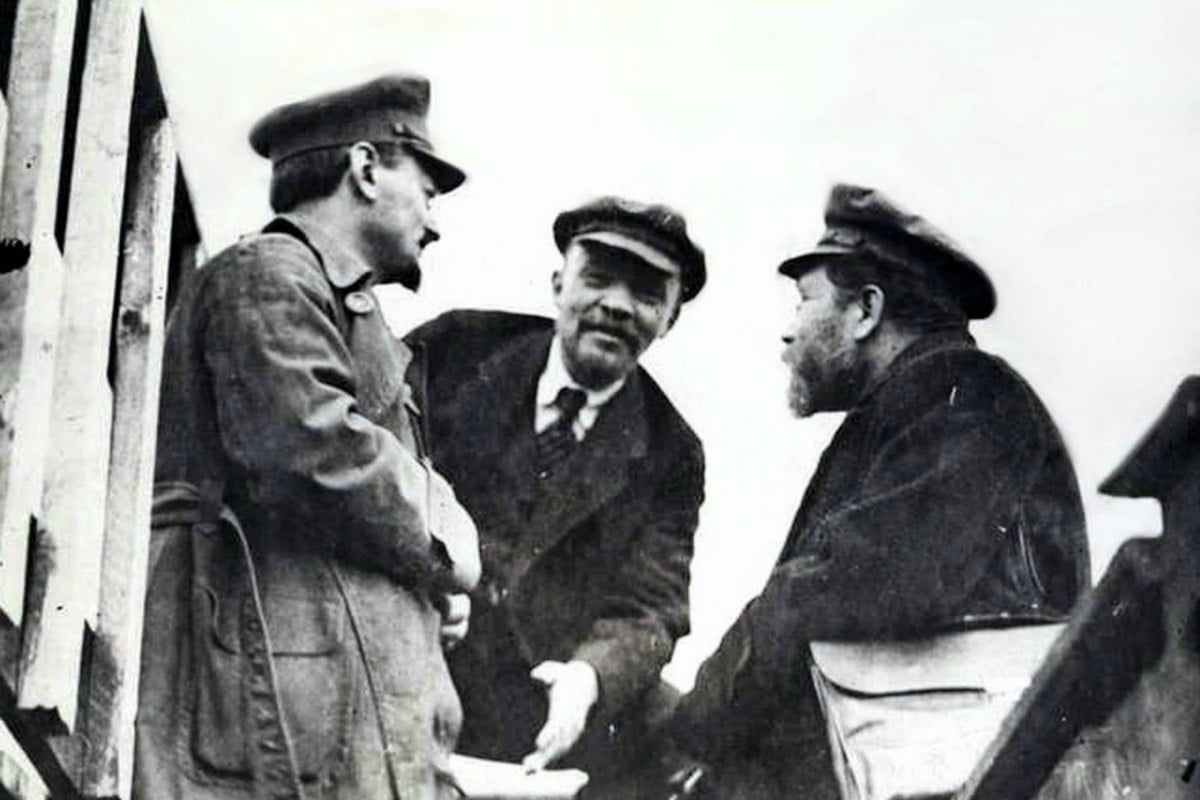 The day after the demonstrations, the press waged a hysterical campaign about Lenin and the “German agents”, while the SRs and Mensheviks, who knew that this was a pack of lies, maintained a cowardly silence. But their complicity with the counterrevolution did not end there. The Mensheviks and SRs called on Lenin and the other leaders to “hand themselves over to justice.” That was an open invitation to place their necks in the hangman’s noose. The reactionaries were now baying for blood. On July 6, the government issued an order for the arrest of Lenin, Kamenev, and Zinoviev.
The day after the demonstrations, the press waged a hysterical campaign about Lenin and the “German agents”, while the SRs and Mensheviks, who knew that this was a pack of lies, maintained a cowardly silence. But their complicity with the counterrevolution did not end there. The Mensheviks and SRs called on Lenin and the other leaders to “hand themselves over to justice.” That was an open invitation to place their necks in the hangman’s noose. The reactionaries were now baying for blood. On July 6, the government issued an order for the arrest of Lenin, Kamenev, and Zinoviev.
The party leaders persuaded Lenin to go into hiding. That was undoubtedly the correct line of action. Lenin was more use to the revolution alive than dead or locked up. It is true that a section of the party was in favour of Lenin going on trial, with the idea of defending himself from the accused’s bench, as Trotsky had done in 1906. But such an idea would have been madness.
Given the general atmosphere of hysteria and the accusations directed personally against Lenin as a so-called German agent, it would have been the height of irresponsibility to entrust him to the tender mercies of the “Law” in a period of counter-revolution.
The bourgeoisie was striving to re-establish “order”—that is, its control over the society and the state, which, as Lenin explained, in the last analysis, is armed bodies of men. The reestablishment of discipline in the army by the most brutal means, including the death penalty, was the prior condition for liquidating the dual power and reconstituting the old state. That could only mean dictatorship, as subsequent events proved.
The July defeat altered the class correlation of forces. With every step backwards taken by the revolution, the counterrevolution grew bolder. On the other hand, the mood of the workers and soldiers in the capital was depressed. They had learned a harsh lesson. The provinces were against them. A sense of isolation and impotence gripped the capital. The workers lowered their heads and waited for the next blow.
Pondering the significance of these events from his hiding place in the little village of Razliv on the Gulf of Finland, some 20 miles to the northwest of the capital, Lenin was in a sombre frame of mind.
Revolution or counterrevolution
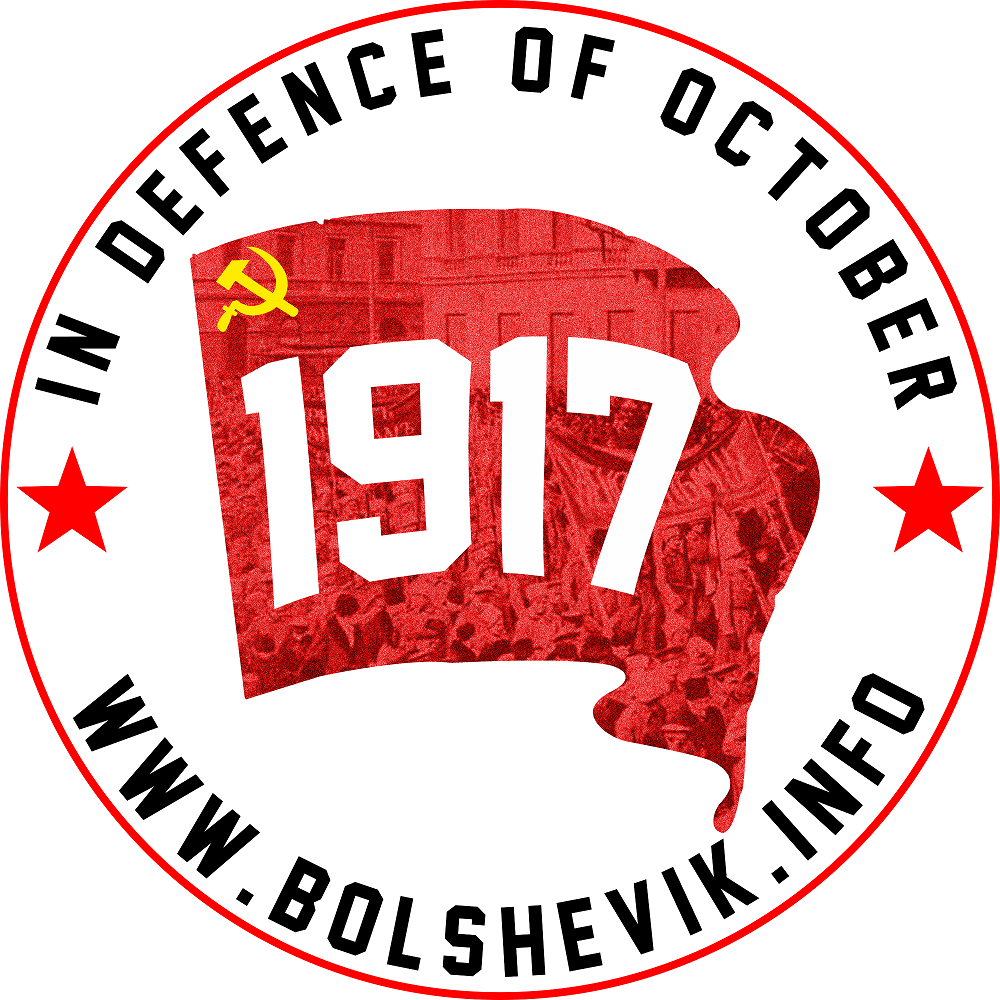 On the basis of the July Days, Lenin had drawn the conclusion that a peaceful outcome was now impossible, that civil war was inevitable, and that it was necessary for the party to place insurrection on the order of the day immediately. “All hopes for a peaceful development of the Russian Revolution have vanished for good,” he wrote. Lenin concluded that the July defeat had liquidated the regime of dual power. The Soviets, under the leadership of the right wing, had, in effect, gone over to the side of the counterrevolution. It was therefore ruled out that they could be transformed and used to take power. That meant that the earlier perspective of a peaceful transformation was no longer possible. Therefore, he advocated abandoning the slogan “All power to the Soviets.” Instead, the party should concentrate all its efforts on preparing an insurrection, basing itself on the factory committees:
On the basis of the July Days, Lenin had drawn the conclusion that a peaceful outcome was now impossible, that civil war was inevitable, and that it was necessary for the party to place insurrection on the order of the day immediately. “All hopes for a peaceful development of the Russian Revolution have vanished for good,” he wrote. Lenin concluded that the July defeat had liquidated the regime of dual power. The Soviets, under the leadership of the right wing, had, in effect, gone over to the side of the counterrevolution. It was therefore ruled out that they could be transformed and used to take power. That meant that the earlier perspective of a peaceful transformation was no longer possible. Therefore, he advocated abandoning the slogan “All power to the Soviets.” Instead, the party should concentrate all its efforts on preparing an insurrection, basing itself on the factory committees:
The slogan “All Power to the Soviets!” was a slogan for peaceful development of the revolution which was possible in April, May, June, and up to July 5–9, i.e., up to the time when actual power passed into the hands of the military dictatorship. This slogan is no longer correct, for it does not take into account that power has changed hands and that the revolution has in fact been completely betrayed by the SRs and Mensheviks. Reckless actions, revolts, partial resistance, or hopeless hit-and-run attempts to oppose reaction will not help. (Lenin Collected Works Vol 25)
That appraisal turned out to have been premature and Lenin subsequently revised it. But it was understandable at the time. What was characteristic of Lenin was to be thinking of the next stage and predicting the inevitability of an insurrection precisely at a time when the counter-revolution appeared to have triumphed all along the line. Lenin saw that the tide of counterrevolution would eventually ebb and that the Bolsheviks must set themselves the goal of taking power. That was shown to be correct. But in another sense, Lenin was too pessimistic. The victory of the right wing in the Soviets was not as decisive as he had thought. On the contrary, the growing polarisation and radicalisation of society would inevitably express itself in the Soviets, as the main mass organisations of the working class. Of course, there is nothing magical about the Soviets as such. True, they are particularly suited to expressing the aspirations and moods of the masses because of their extremely democratic and flexible form. But in a revolution, where the moods of the masses change with lightning speed, even such organizations as these lag behind, reflecting the situation of yesterday, not today. As early as April, Lenin warned against a fetishism of soviets. At the April Conference, he said: “The Soviets are important to us not as a form; to us it is important what classes they represent.” It was not a question of participating in “soviet parliamentarism,” of manoeuvring with the tops, but of finding a way to the workers that were looking to the Soviets.
After July, the class balance of forces had been dramatically modified. The reformist leaders understood nothing. They resembled a man sawing off the branch upon which he was sitting. With every blow struck against the Bolsheviks, the confidence and aggressiveness of the right increased. Inevitably, this was directed not only against the Bolsheviks but also against the Soviets themselves. Not only did the Mensheviks and SRs refuse to take power, but by their actions, the Soviet leaders were encouraging the counterrevolution, and, in Lenin’s opinion, making future violence and civil war inevitable. In that sense, these were counter-revolutionary soviets, inasmuch as the right-wing reformist leadership, leaning on the Soviets, was actively assisting the bourgeoisie to re-establish its control of the state.
Despite everything, the Bolsheviks recovered fairly quickly from the defeat of July. The victory of the counterrevolution proved to be far shallower and more ephemeral than Lenin had assumed. Surprisingly few left the party after July, despite the fact that the Bolsheviks had a rough time even in some of the factories where backward workers were influenced by the barrage of anti-Bolshevik propaganda. Within a few weeks, the party was beginning to recover its influence and grow. The reasons were rooted in the objective situation. Despite its temporary success, the Provisional Government’s policies were as unpopular as ever. The news from the front went from bad to worse. Kerensky’s “patriotic” demagogy cut no ice with the troops who wanted only to demobilize and go home. The attempts to restore discipline under such circumstances only made things worse. The soldiers also observed with growing alarm the re-emergence of counter-revolutionary elements in the officer corps. The tsarist officers had kept their heads down since February, but now started to regroup and assert themselves with ever-greater confidence.
Against Lenin’s prognosis, the Soviets began to be more receptive to Bolshevik propaganda. Some of these [had taken] a belligerently anti-Bolshevik attitude after the July Days, passing resolutions condemning the organisers of the demonstration. But now the mood was beginning to change. The rank-and-file Menshevik and SR workers were becoming ever more critical of their leaders.
A contradictory process was unfolding: the reformist leaders in the All-Russian Executive Committee were pledging their unconditional support for Kerensky, while in the district soviets, suspicion towards the government was growing by the hour. This was shown by the steady rise of the left current represented by the Menshevik Internationalists (Martov), the Inter-District Committee (the Mezhrayontsi) and the Bolsheviks. By midsummer, in addition to Vyborg and Kolpinsky, Bolshevik resolutions were being passed in the Vasilevsky Island, Kolomensky, and the First City District. Although formally they were still Mensheviks and SRs, the workers were more and more inclined to listen to the ideas of the only people who were prepared to speak what was on their minds—the Bolsheviks.




